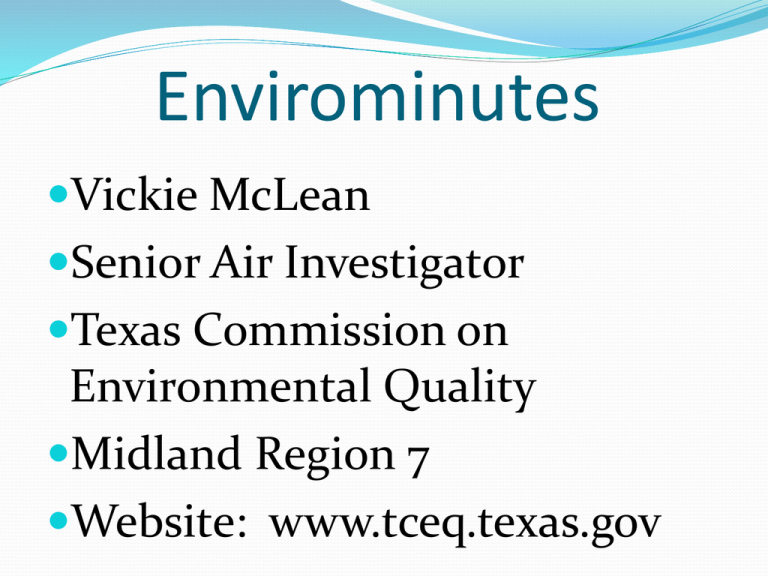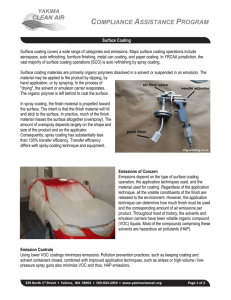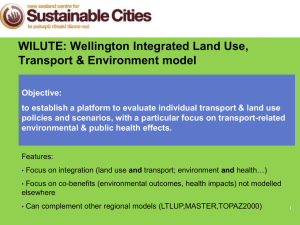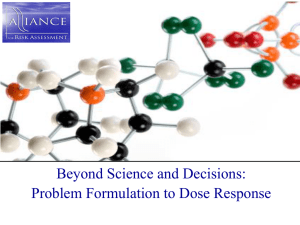Did you know that you must have authorization from the Texas
advertisement

Envirominutes Vickie McLean Senior Air Investigator Texas Commission on Environmental Quality Midland Region 7 Website: www.tceq.texas.gov Did you know that there are environmental rules for abrasive blast cleaning and spray painting? The State of Texas has rules for abrasive blast cleaning and surface coating operations. Failure to adhere to these rules can result in violations and fines. RULE §106.452 Dry Abrasive Cleaning Dry Abrasive Cleaning includes all types of Abrasive Blast Cleaning regardless of the blast media used. If you conduct completely enclosed abrasive blast cleaning with adequate filtration, you can claim the Permit by Rule and don’t even have to register. If you conduct outdoor blast cleaning: There are limits to the amount of blast media used per day, per month and per year. The blast cleaning must be done at least 500 feet from any offsite receptor RULE §106.433 Surface Coat Facility Spray Painting (Spray Coating) Clean up all spills immediately. When cleaning spray guns and other equipment in a booth keep exhaust fans running. Don’t leave open containers sitting around and make sure to dispose of all waste properly. (TCEQ Waste Rules) If you have a drying or curing oven, there are specific conditions which must be met regarding fuel and types of coatings. There are limits for total uncontrolled emissions from the coating materials (as applied) and cleanup solvents. What are “exempt” solvents? An exempt solvent is a volatile organic compound that does not participate in a photochemical reaction to form smog. EPA considers its reactivity to be negligible. The most common exempt solvents are acetone and methylene chloride. If emissions are less than 0.25 lb/hr of VOC and/or exempt solvents, a facility is exempt from the remaining requirements of this section Opacity of visible emissions shall not exceed 5.0%. If you are using a booth or enclosed work area there are requirements for air flow, stack height, filter efficiency and VOC emissions. Coating operations that are performed outdoors or for indoor operations that do not comply with the requirments, the following applies: No more than 6 lb/hr of VOC emissions, averaged over any 5 hour period, and 500 pounds per week shall be emitted. If coatings contain more than 0.1% by weight of some metals, then total VOC emissions shall be further limited Coatings are applied with non-spray equipment (such as brushes, rollers, dipping or flow coating), the additional restrictions in this paragraph do not apply. Coating operations shall be conducted at least 50 feet from the property line and at least 250 feet from any off site receptor Written site approval must be received from the appropriate regional office of the commission or any local program having jurisdiction. Records must be maintained for 24 months and be made immediately available to the TCEQ or any pollution control agency with jurisdiction. Cannot create a nuisance If the TCEQ receives a complaint and determines that you have created a nuisance condition, a violation will be issued. If the TCEQ gets a complaint and the investigation determines that registration or a permit is required and has not been obtained, a violation will be issued for operating without a permit. If you have additional questions regarding these regulations, please contact: Thank you.











